How to Fix “No JVM Could be Found” Error on Windows?
The “No JVM Could be Found” error on Windows usually appears when trying to launch Java-dependent apps like DbVisualizer, Minecraft, or any executable made with exe4j. This error shows up because the system can’t find the Java Virtual Machine (JVM), essential for running these apps.
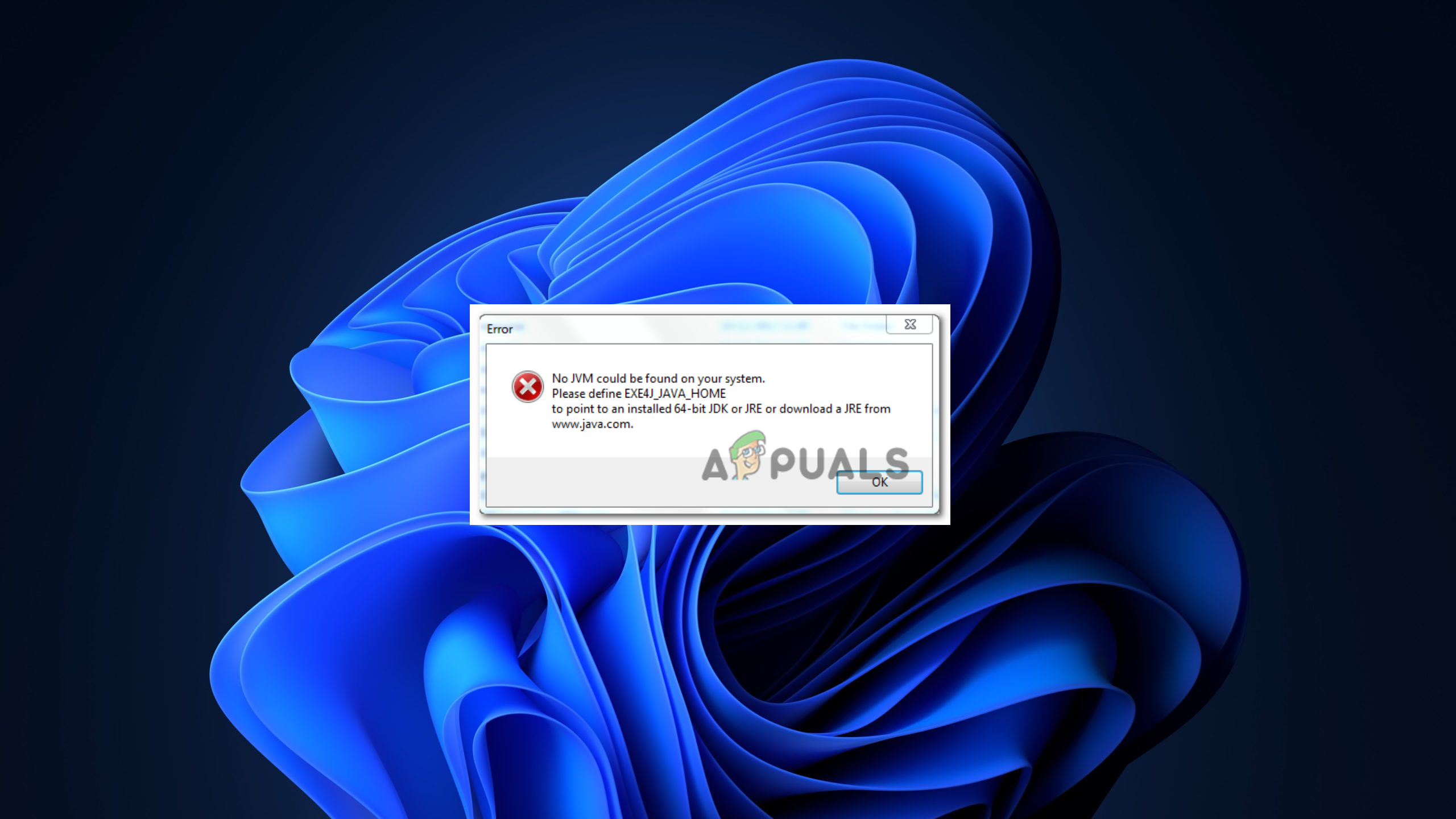
The most common cause is an incorrect or missing `JAVA_HOME` environment variable, often due to a mismatch between the installed Java version and the app’s requirements.
Other possible issues include incompatible Java versions, corrupted installs, or wrong system paths, all of which stop the app from accessing the needed Java environment.
If you’re facing this issue with an Openfire server, it’s likely due to a bug fixed in Java releases newer than Java 8 Update 161.
Note: Refer to our guide on fixing the ‘javac is not recognized’ error.
1. Install a Compatible Version of DbVisualizer
Install the correct bit-version of Java that matches the DbVisualizer version in use to resolve the error. This ensures the Java environment meets the app’s needs, making it work properly.
- Go to the Java download page by clicking here. Download the Java version you need: Windows Offline (32-bit) or Windows Offline (64-bit).
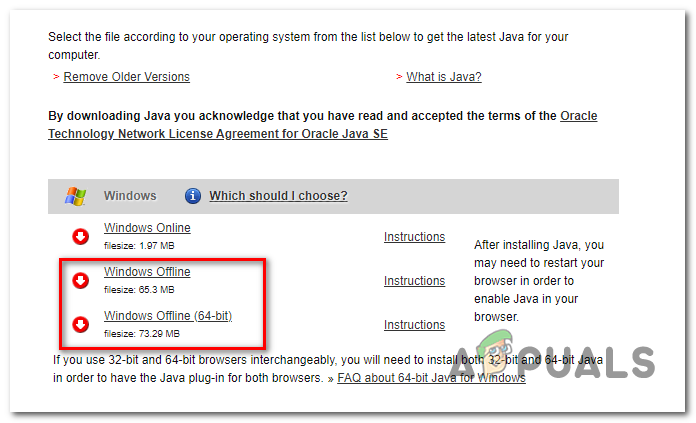
Downloading the correct Java environment version - After downloading, run the installer by double-clicking the executable file. Follow the on-screen instructions.
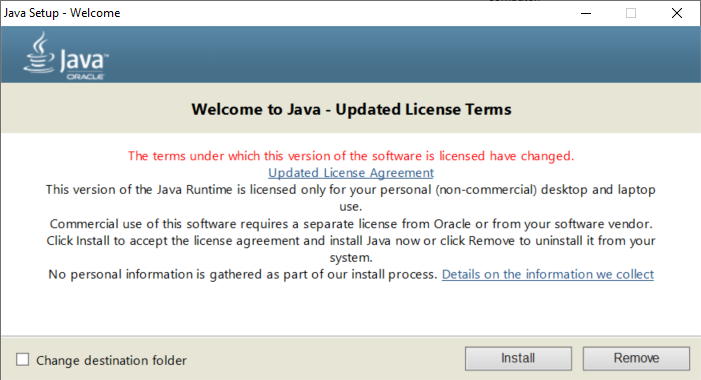
Installing the correct Java environment - Once installation is complete, restart your computer.
- After restarting, check if the previous error is resolved by attempting the same action.
2. Update the Java Environment Variable
To avoid errors related to not finding the JVM, it’s essential to set the `JAVA_HOME` environment variable correctly. This variable directs your system to the Java installation needed to run Java applications.
When this path is incorrect or outdated, the system can’t locate the JVM, causing errors. Updating the `JAVA_HOME` variable to the correct Java directory ensures the system can find and use the JVM properly, letting your applications run without issues.
- Press Windows key + E to open File Explorer.
- Navigate to your Java installation directory using File Explorer, which is usually located at:
C:\Program Files\Java\*Java version* - for 64-bit version C:\Program Files (x86)\Java\*Java version* - for 32-bit version
- Once in the correct directory, right-click the navigation bar and choose Copy Address from the context menu.
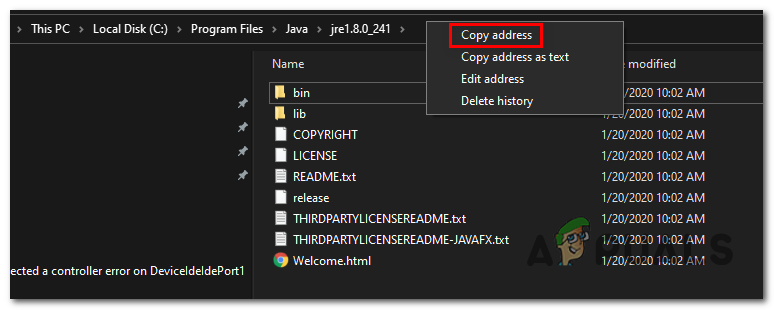
Copying the Java address from the correct location - Press Windows key + R to open the Run dialog box. Type sysdm.cpl and press Enter.
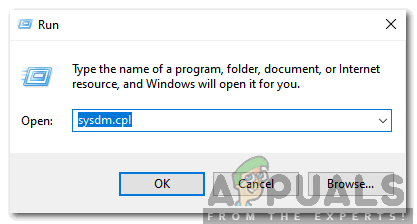
Typing in “sysdm.cpl” and pressing “Enter” - In the System Properties window, click the Advanced tab and then click Environment Variables.
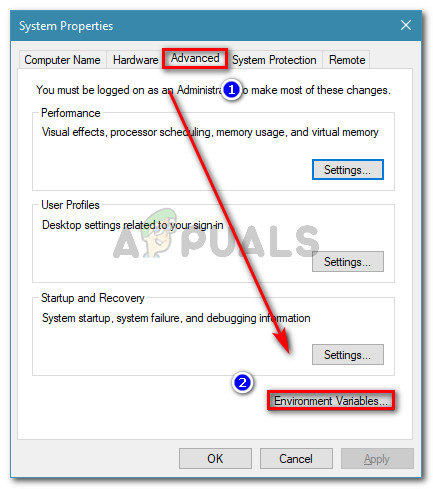
Navigating to the Advanced tab in System Properties and clicking on Environment Variables - Under System variables, find and select Path, then click Edit.

Editing the Path variable - In the Edit Environment Variable window, click New and paste the Java installation path you copied earlier. Click OK to save.
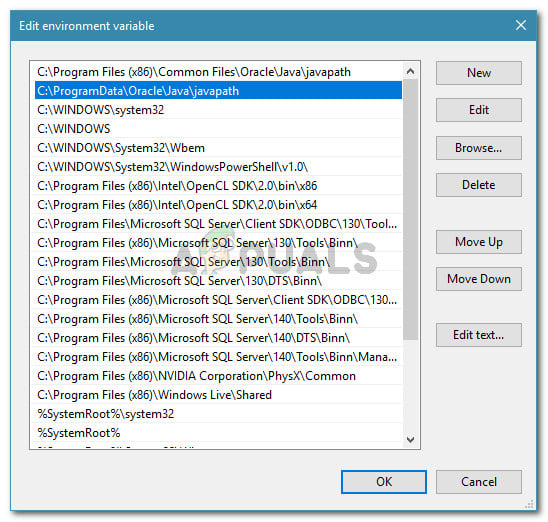
Deleting the Java PATH environment variable - Restart your computer to apply the changes.
3. Reinstall the Current Java Environment
By reinstalling the current Java environment, you can potentially resolve the error, particularly if it’s related to an Openfire server. This step is effective because it replaces any corrupted or outdated Java installations with the latest versions, including bug fixes and improvements that may fix the issue.
- Open the Run dialog box by pressing Windows key + R.
- Type ‘appwiz.cpl’ and hit Enter to open the Programs and Features window.
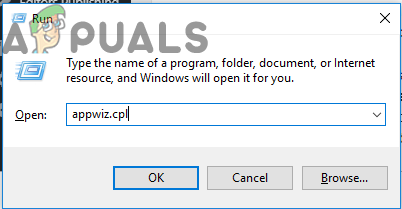
Entering “appwiz.cpl” into the Run prompt - In the Programs and Features window, type “Java” in the search bar to quickly locate all Java-related installations. Right-click each Java entry and select Uninstall.
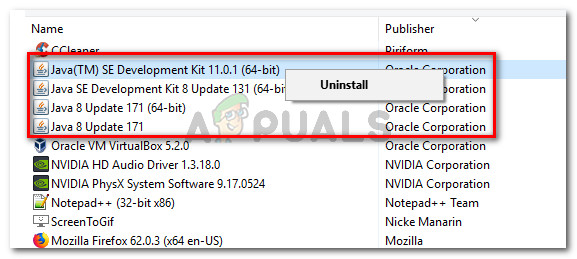
Uninstalling Java installations - Repeat the previous step to remove any other components you need to uninstall (e.g., Java updates, NodeJs, etc.).
- Restart your computer.
- After the restart, go to this link to download and install the latest Java Runtime Environment (JRE) version.

Downloading the latest Java environment version - Restart your computer again to apply the changes and check if the issue is resolved.




